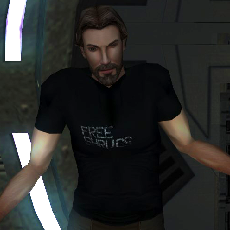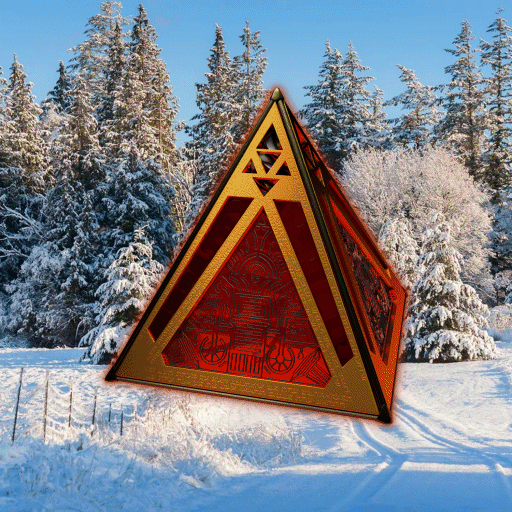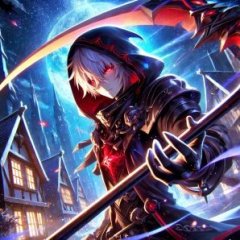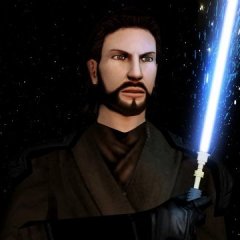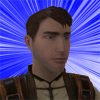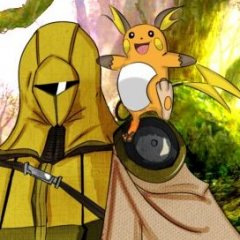Leaderboard
Popular Content
Showing content with the highest reputation on 08/14/2019 in Posts
-
1 pointI played TSL first. You bought 'em, play 'em any order you wish. But prepared for folks to spoil you on K1 once you tell people you've finished TSL.
-
1 pointLike DP said, K2 is a lot more flexible when it comes to animations. The 2da contains them all, although, not all of them are labelled very helpfully. For example, I believe "animloop01" is for the sitting in a chair looping anim, although I believe it may be used for other uncommon animations on particular models (such as BioWare swapping out the dance animation for other unlisted anims like Calo Nord raising his grenade in K1). animations.2da
-
1 point
-
1 point@Sith Holocron @DarthParametric There is now compact header theme available (you can change the theme at the bottom of the page)
-
1 point
-
1 pointI've noticed that after I had turned on V-Sync in-game that the mouse sensitivity went up high enough to be bearable for me. If you turn it off, it might slow way down for you.
-
1 pointYou might make him a wounded Taung of some sort. It's sad we hardly ever see him unmasked.
-
1 pointI was thinking something more radical. We all know some alien's in Star Wars need breath masks to survive on other planets, notable examples include Plo Koon and Wat Tambor. With this knowledge why not create a whole new alien species who need your breath mask to survive. I personally would use RedRobs lizard player heads as an inspiration for your new alien. "But N-DReW25, Mandalorians aren't aliens" you may say. To this I say If Mandalorians recruited wookiees to fight for them in the war they'd recruit Sherruk the alien as a Mandalorian as well. If Sherruk is an alien and a Mandalorian that'd make him harder than normal Mando's In Vanilla, Sherruk is the Kotor equivalent of a Battlefront hero aka he's an unstoppable juggernaut unless you pile all your landmines on top of each other and lure him over them all. In this mod, why not make him skill based by creating new items that improve your skills instead of make you OP. With each item you could add a little story with each item for example on top of being a brute fighter thanks to his race and training he is also a sort of technical genius allowing him to create a Vibrosword combined with a Lightsaber (Deadmans Laser Sword mod, having multiple NPCs like Sherruk and Selven wield DM laser swords may help provide this illusion that the laser swords aren't this one time weapon that appear once. Having them occasionally appear on bosses can add the illusion that these weapons aren't prototype for just one person to have but aren't massed produced for an army) An acutal Lightsaber is a must as Jon states he wielded one so main hand would he Lightsaber off hand a DM laser sword. Also add grenades and arguably medpacs and an energy shield of your choice, maybe also add a custom HQ pistol or a rifle so when you are out of range he switches weapons. Let me know if any of this sounds interesting.
-
1 pointDamn, this is impressive. Good work! 😀 And yes, it is further along than xoreos, from a raw playability standpoint. By what you're skipping, It's mostly "just" (without trying to downplay your work) script functions, though, yes? From the underlying code framework, systems and concepts that are missing in the code, I assume it's probably quite similar to xoreos, correct? How does the start of KotOR look for you? That's where we're "stuck" at the moment, in the first room with Trask, because there is a lot of party management stuff necessary there. I'm certainly curious and interested in your code, how you solved certain things, and what I could pilfer for xoreos ;). So please, do get the code ready. The main issue for xoreos, though, is that we need people to work on it, if you allow me my recruitment spiel here. You can reach me here, by mail, on Freenode IRC, wherever :P (I also think that you're selling yourself way short if you think you couldn't meaningfully contribute to xoreos. For the most part, C++ isn't some wildly different animal from JS. It's not, say, Haskell.) xoreos, too, is of course also just standing on the shoulders of giants, building on work by others. I too owe a lot to those, and also to the people here. <3 In either case, again nice work, and good luck :)! Feel free to contact me if you have any questions about xoreos' code, or would like to talk shop or something :P
-
1 pointHoly hell this is amazing. Man, can I contribute? I'm a JS developer and this is a lot more impressive of a project than my little modding tool I was working on!
-
1 pointI’m conflicted about this because I dislike JavaScript but this is amazing work! Great job @Blue!
-
1 pointHere's my folder and its contents so far. Now it's time to convert this file with MDLOps. Load your edited ASCII file, then read and write. MDLOps will generate a new MDL and MDX. Run the Head Fixer on the MDL. The Head Fixer creates a new, fixed MDL file to put the animations back. Rename the fixed MDL and the MDX file from the previous step to whatever you want. However, the file name must have the same number of characters as the original (in this case 8). You could get around this by renaming before you export, but it requires more setup work, so I resign to keeping it the same. Once you've chosen your name, open the MDL in a hex editor. Find and replace the original name (mine was P_AttonH) with your new name (mine is JC_DuH01). Be careful to only replace characters, not delete them; that would break the model and cause your game to crash, most likely. There are 5 Duros textures in the game, so at this stage I use the same process to create duplicate models for each texture variation. After some 2DA editing to get the head in the game, or in my case simply keeping it as P_AttonH for a quick test, we can see our final result: Behold, a new head that can go on any body. You can use roughly the same process to create new full body models if you like, mixing heads and bodies from different models. That's what I did for the Handmaiden Sisters and I've made a tutorial here. So, go make new heads, and good luck!
-
1 pointThis is a repost of an old tutorial I did on LucasForums. Original posts can be found HERE. The combat animations are in fact in the regular old animations.2da; combatanimations.2da is more like a seating arrangement. It lists all the attacks and then states which animation goes with it - hit, parry, dodge, and so on. It's entirely numbers so it can be a mess. animations.2da gives you more of a clue, but the naming scheme can seem a bit weird at first glance. The animation name is an alphanumeric code with four parts, alternating letters and numbers. The first part corresponds to the attack type - a generic attack, a feat, or a monster attack. There also seems to be some attempt to divide it into ranged and melee, but I can't discern it entirely. b - ranged c- melee f - feat g - generic m - monsterNext, it's divided into weapon type as well as whether the character wielding one or two. These are given abbreviations for K2 only. 0 - N/A - droid 1 - SB - stun baton 2 - SS - single saber 3 - 2HS - two-handed saber (double-bladed) 4 - DS - dual sabers 5 - SB - single blaster 6 - DB - dual blasters 7 - RF - rifle 8 - NT - natural attack (unarmed, I believe) 9 - HC - heavy carbine 10 - UC - unarmed, complex (K2 only) 11 - N/A - wrist launcher (K2 only)Next, what the character is doing. a - attack d - damage f - appears unused g - dodge n - deflection p - parry r - ready w - wieldAnd finally, another number. In most cases this is simply a variation number; some in K2 have an additional letter, for even more variation. So, for example, if you want a character wielding a blaster rifle to dodge, the animation would be g7g1. g: generic 7: rifle g: dodge 1: variation (in this case there's only one) In the original thread, Fallen Guardian asked about power blast. This is where it gets complicated. Some of these variables are limited by other variables. Parry, for instance, is only a melee occurrence. I believe this is the reason for the distinction between ranged and melee that I mentioned above. Let's look at the first part again. 1:b - ranged 1:c - melee, complex 1:f - melee, feats 1:m - melee, monster 1:g - both, genericAnd now let's look at the third part. 3:a - both, attack 3:d - both, damage 3:g - ranged, dodge 3:n - melee, deflection 3:p - melee, parry(Putting this in code because of the emoticon.) 1:b is used for [i]all[/i] blaster attack animations. 1:c covers complex melee animations such as parries and clashes. 1:f is reserved for melee feats - critical strike, flurry, and power attack, as well as Force Jump. 1:m is for engaging a monster in melee. 1:g is anything else. 3:a is used for any attack. 3:d is used for any damage. 3:g is used for dodging ranged attacks. 3:n is used for deflecting ranged attacks with a lightsaber. 3:p is used for parrying melee attacks.Because of these specifications, certain ones do not belong with certain other ones. If that's not confusing enough, the final number is not always a simple variation; what it is depends on both of the above letter slots. I'll go over the feats for you. MELEE (f***) 1 - critical strike 2 - flurry 3 - power 4 - jump RANGED (b***) 1 - attack 2 - attack 2 3 - sniper shot 4 - power blast So, finally, a power blast animation is b*a4. The asterisk is either 5, 6, 7, or 9, depending on whether you are dealing with a single blaster, dual blasters, a rifle, or a heavy carbine. To make things even more confusing, there are a couple other animations that use the same scheme, in a way. The knocked down animations, for instance, are g1x1, g1y1, and g1z1. And in K2, there are multiple ready animations for lightsabers, the final number corresponding to the saber form, but I don't know if they ever finished the animations for them. If you're still confused, the 2DA for K2 has a description column that might help. The format is virtually the same as K1's, but of course K2 has more animations so you shouldn't go by it entirely.
-
1 pointIt's... kind of complicated but not really difficult if you know what you're doing. The way the animations work is a series of steps. When you fire the script, it checks a specific line in animations.2da. This then checks the name of the animation - in this case, good - and it goes looking for the animation based on that name. First it checks the model, then if it can't find that (most models don't have special animations) it checks the supermodel, and then the supermodel's supermodel, and so on down the chain. Once it finds the animation it plays it, and so long as the animation you want to play is at the top of the chain, it's fine. The upshot is you can add an animation to any model (or supermodel) and so long as it's at the top of the chain and you link it to the one of the standard supermodels, all the other animations will be unaffected and play as they're supposed to. So, you want to add the good animation to Juhani, but under a different name - one that can already be scripted. There are two options here: you can either add it to a model, or you can add it to a supermodel. You said you're using a UTC, so I assume she's going to be wearing some specific item, and you only actually need that model... but I'm not sure if that will be easier because the importing method requires a bit of work in 3ds Max and involves some further complications. The other option is to simply hex edit the model - S_Male02 in this case - and change good to whatever you want to use. But when you're replacing something through hex editing you have to keep the number of characters the same... or I guess you could convert it to ASCII, edit the ASCII in Notepad, and then convert it back through MDLOps. There are a number of options here. If this sounds like too much work I won't blame you, but if you're interested in doing it I can provide some more specific details. I do this sort of thing all the time and it's not difficult, just kind of time consuming, and the best method to use is very situational.

